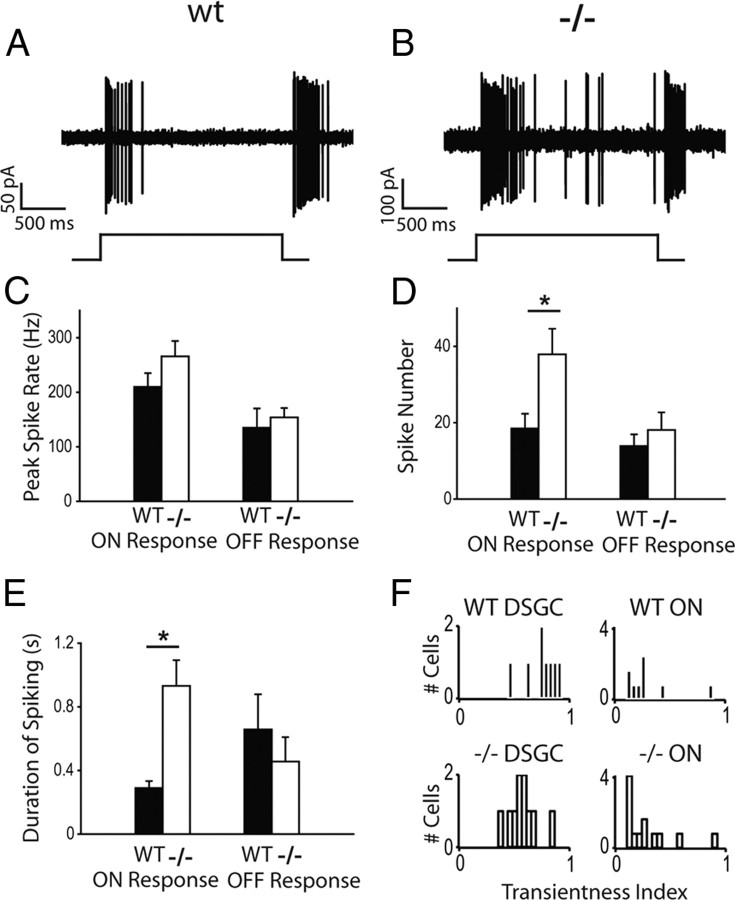Figure 7.
The ON spiking response of Vsx1τLacZ/τLacZ ON-OFF directionally selective ganglion cells is more sustained. A, B, Representative spiking data of the flash responses from a wild-type (WT) and Vsx1τLacZ/τLacZ (−/−) ON-OFF DSGC, respectively. C, The peak spike rates for ON and OFF responses from Vsx1τLacZ/τLacZ and wild-type DSGCs. D, The spike number for ON and OFF responses from Vsx1τLacZ/τLacZ and wild-type DSGCs. E, Duration of ON and OFF spiking responses from Vsx1τLacZ/τLacZ and wild-type DSGCs (i.e., the time from the first spike to the last spike generated by either the ON or OFF flash). F, The transientness of ON spiking responses from WT and Vsx1-null DSGCs and non-DSGCs. Responses are plotted on a transientness index, calculated as the number for spikes elicited in the first 200 ms of the ON response divided over the total number of ON spikes. Values range from 0 to 1, with higher values indicating more transient responses. For C–E, n = 8 for wt; n = 10 for knock-out. For F, n = 9 for wt; n = 13 for knockout; *p < 0.05.

